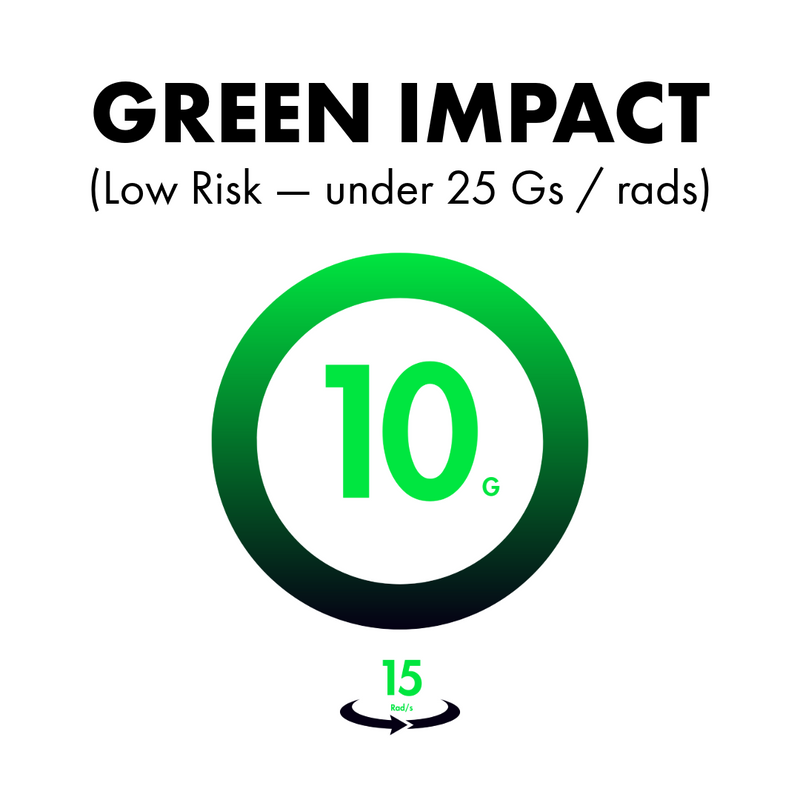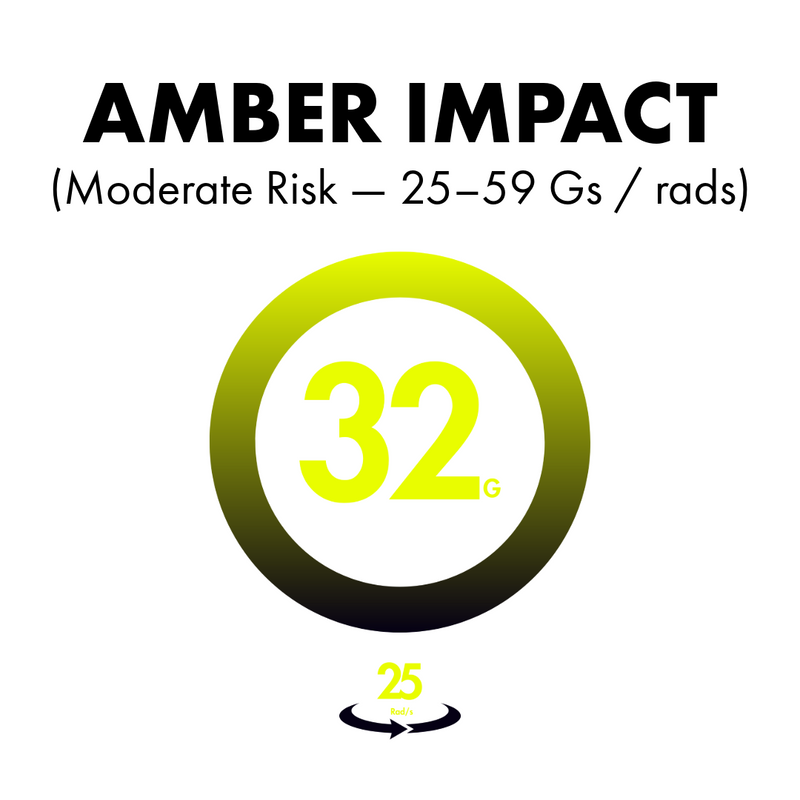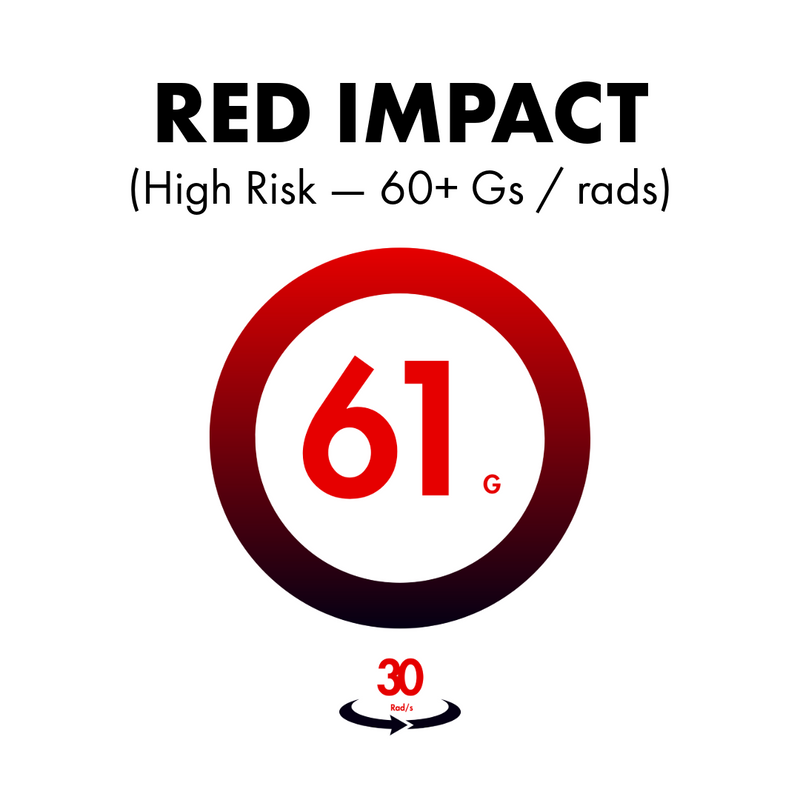- Measures straight-line impact forces like a direct blow to the front, back, or side of the head.
- High G-force events are linked to bruising, skull fractures, and focal injuries.
- Common in high-speed sports or direct collisions.
In simple terms, in the context of head injuries, we’re referring to the impact that happens to the skull and brain when someone gets hit, falls, or stops suddenly.
For reference, 1G is the force of Earth's gravity; so, a 30G impact means the head experienced a force 30 times greater than gravity (this is the equivalent of your head suddenly weighing 150kg instead of 5kg).
High G-forces can cause the brain to bounce or shift within the skull, potentially leading to concussions or sub-concussive injuries, even if the user doesn't show immediate symptoms.
For HIT users, G-force data is critical because it helps quantify the severity of impact and track cumulative exposure, which is a significant factor in brain health over time.
Research increasingly shows that it's not just one big impact that matters, but the total load over a week or season (e.g., exceeding 600G/week). By monitoring linear Gs in real-time, HIT sensors can trigger alerts, support injury assessment, and guide recovery decisions, giving athletes, parents, and coaches a powerful tool to detect and prevent those invisible injuries.






